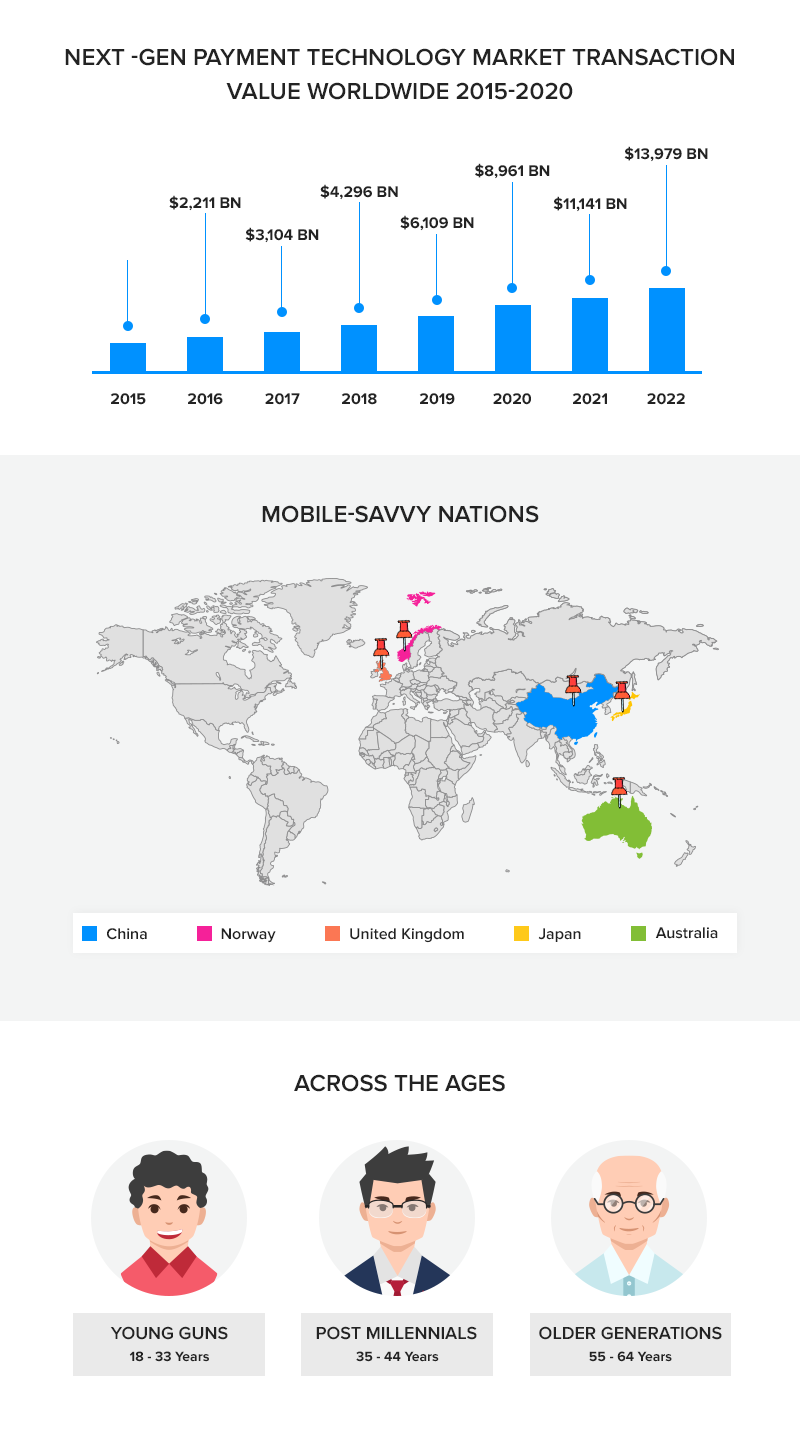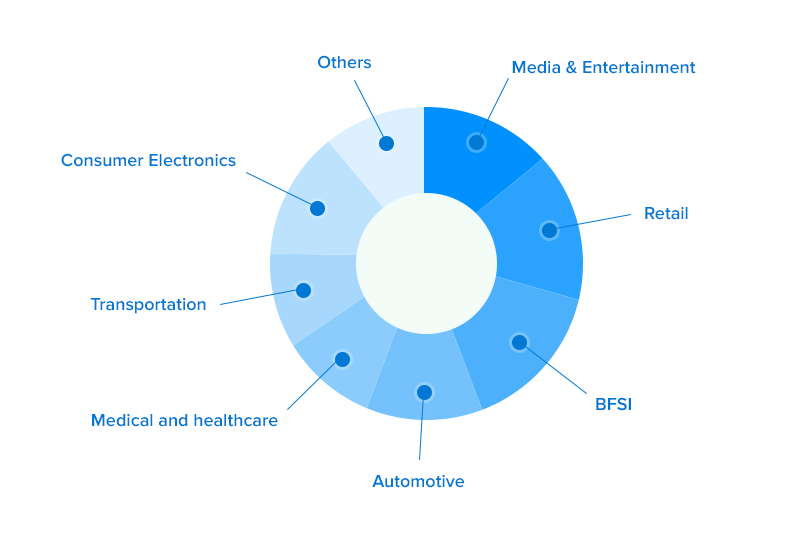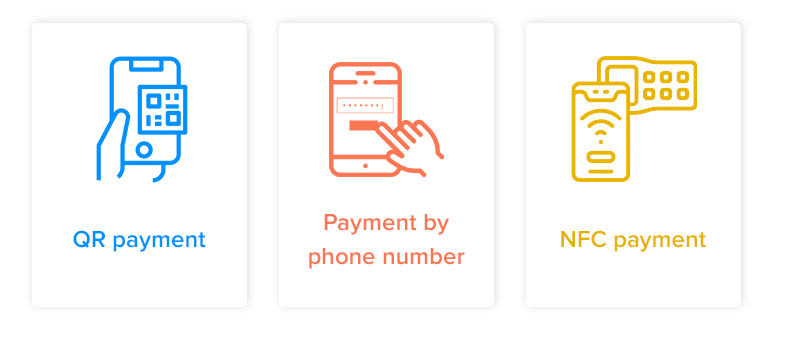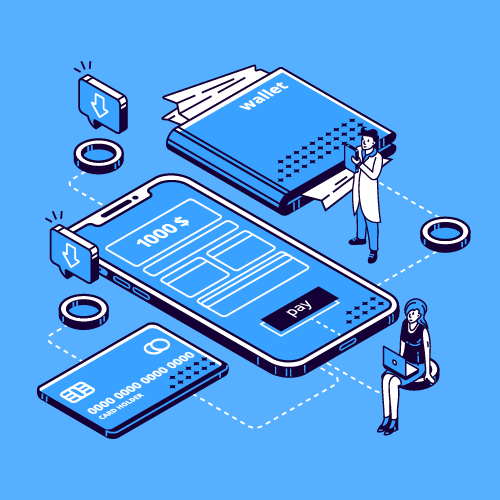A Checklist to Make Your Wallet App a Fintech Disruptor
So you have an idea for a mobile wallet application. One that you see becoming what PayPal is for the USA and PayTM is for India.
The idea of entering the wallet sector is wise not only because it’s one of the top common payment apps types but, especially in today’s market when half of the world is swearing by the digital wallet benefits, while the other half is looking to make it a part of nation-wide financial operations.
But, the end goal – to make it the next fintech disruptor, will take some work and several well-analyzed and strategized moves. Only then your application will be able to become the textbook use case of the impact of mobile wallet on Fintech.
In this article, we are going to look into the factors that would affect the chances of your wallet app becoming the next big-shot Fintech application that the whole world uses.
- Key Statistics to Convince Your Board Members
- Understand the User Intent Behind Choosing Digital Wallets
- Industries Using Mobile Wallets Most
- The Types of Mobile Payments You Can Offer
- The Underlying Technologies That Will Make Your Mobile Wallet Unique
- Know the Compliances Your Mobile Wallet Technology Would Have to Adhere to
- Partner with a Fintech Development Agency That can Help You Reach the Goal
- FAQs About The Impact of Mobile Wallet on Fintech
*Note to the reader* Wallets are one of the most in-demand things in the Fintech industry. But, it does not necessarily mean that you should develop a full-fledged application out of it. You can even incorporate the functionality in an application.
Read this article as a checklist for things to consider when developing a wallet functionality. There will be points which will be focused on a full-fledged application (like some parts of technologies), we will update you when that is the case.
Key Statistics to Convince Your Board Members
This year, the global mobile wallet market size is poised to reach $5,250 billion – a massive number for an industry which is still in its developing stage and is still exploring ways to make itself more feature rich.
Here’s a visual representation of the mobile wallet adoption across the globe, in addition to a peek into the future of mobile wallets.

Understand the User Intent Behind Choosing Digital Wallets
Before you start talking to a Fintech app development company about the development of a wallet application, what you would need is to know why people are using this functionality. Only when you have the understanding of the user intent, you will be able to align it with your users and check if it is something that they are also seeking. Here are the reasons that are bringing a sharp rise in the uses of mobile wallet apps.
- Simple to carry – whether you use a mobile wallet or any other digital wallet device, they are a million times stress free to carry compared to carrying a credit card or cash, with the constant fear of them getting lost.
- Zero-liability protection – the best part about the mobile wallets is that they come with a zero-liability protection. Meaning, if the users fall victim to a fraud, they are refunded the amount conveniently.
- Greater security – mobile wallets come with additional security features such as – push notifications, activity alerts, personal account monitoring, and transaction history, offering users security and transparency on the go – something that in the olden days was dependent on the bank servers. The security of mobile wallet app is all the more important for data conscious millennials and Gen Z user base.
- Greater user engagement – users have now grown accustomed to the rewards and discounts that they get through mobile wallets, compared to their banking applications.
- Used by a lot of retailers, across the world – Samsung Pay is designed to be used at 10 million+ U.S. stores, Android Pay at more than 1 million stores, and Apple Pay at more than 3 million stores. The acceptance rate has increased users’ adoption rate, at a direct proportion.
Now that we have looked into the users centric impact of mobile wallet on Fintech
Industries Using Mobile Wallets Most
When we talk about the industries that have opened themselves to mobile wallets and related services, the list includes – Retail, Entertainment, BFSI, Automotive, Healthcare, Transport, Consumer Electronics, and some of low extent like IT, Education, etc. These industries define the ways mobile wallets disrupt Fintech.
 Retail, undeniably, has been the first industry to be touched with the advent of different types of mobile payments and its related branches. Next, BFSI industry is also now opening up to the idea of offering a wallet system to the users. There are many wallets which enable the users to transfer money straight from their bank account – something that the BFSI sector also greatly benefits from.
Retail, undeniably, has been the first industry to be touched with the advent of different types of mobile payments and its related branches. Next, BFSI industry is also now opening up to the idea of offering a wallet system to the users. There are many wallets which enable the users to transfer money straight from their bank account – something that the BFSI sector also greatly benefits from.
The adoption of wallets in case of transport, healthcare, consumer electronics, etc are a sign of how easy it is to take these services. Lastly, in the case of the media and entertainment sector, it helps to integrate a mobile wallet in the system or to partner with a mobile wallet service provider because they generally deal in subscriptions.
In case of subscriptions, the users pay a fixed amount every month or quarter – something that becomes very trackable and convenient when you use a wallet system.
The Types of Mobile Payments You Can Offer
The purpose of the different types of digital wallets is not just to save the money in a place – like the traditional definition of wallets work. The idea behind developing a mobile wallet app is to offer a platform for the users to spend the money from the wallet.
This is what the process generally looks like:
Money from my bank account 🠊 Mobile Wallet 🠊 Payment at the Store/Individual.
See how payment is the next step and the end-goal of your mobile wallet development process? Now let’s look at the different types of digital payments that you can offer into your wallet.

- QR Payments: The method is majorly used for paying money at retailers’. Usually, at time of check-out, the cashier puts in the amount which has to be paid and the users then lets the cashier scan the QR code on a mobile device.
- Payment by Phone Number: Used majorly in case of peer to peer payments, payment by number works when you put in the phone number of the person you have to give money to and the amount then get deducted from the wallet or the bank account.
- NFC Payments: It is one of the most up and coming ways for making payments online through the multiple types of digital wallets (or non wallets). It is, engineering wise, a set of communication protocols which allow wireless connection between NFC enabled devices and POS terminals. What makes them so uniquely secure is that the card details are not passed on to the retailers’.
The Underlying Technologies That Will Make Your Mobile Wallet Unique
Everything that you have read till this point is something that is present in every wallet system, even the digital payment features that you read above. It is the technical level offerings that you offer to your users at this point, which would separate your application from the others. These technical offerings also find a name in what constitutes the best practices in making a digital wallet app.
1. Peer-to-Peer Payments
P2P payments are one of the most used digital wallet feature sets that individuals use when they are using your mobile wallet. PayPal is one of the most quoted examples in this category, with millions of people using it to transact for both personal and professional reasons like paying for outsourcing etc.
2. Remittances
At a time when the world is operating as one place and outsourcing is acting a pillar in the bridge to globalization, people are now using wallets development in fintech as a way to perform remittances. The area is still very ripe for innovation as very few global wallets are present in the market today. Some businesses, to solve the issue are looking at adoption of Blockchain in the payment infrastructure.
3. Recurring Investments
While still a very novel idea, there are some Fintech businesses that are exploring the technicalities of bringing the stock and mutual world market on digital wallets – to make it easier to keep all their spending, saving, and investment needs in one place. After remittances, this is the other area which fintech is now thinking of expanding into.
4. Co-branded Credit Cards
A co-branded credit card is something that is sponsored by two parties – retailer and bank/card network like MasterCard, Visa, American Express, etc. Through the co branded cards, the cardholders get merchandise off or reward points when they purchase from sponsoring merchants, but can also use cards at any retailer that accepts the bank or card network.
Businesses are now exploring ways to incorporate the co-branded credit cards into wallets.
5. Seamless, Transaction-free Wallet to Wallet Transfer
Although seem too obvious, the technicalities that go behind making wallet to wallet transfers transaction free and seamless is difficult. It takes in-depth expertise into the domain to design and develop a solution that the users would need. Our team of Fintech engineers have a deep understanding of how to code seamlessly and clearly – something that translates into a smooth running wallet operation as well.
What you would want to come on top is an application which is absolutely glitch free and comes with a zero transaction clause.
Know the Compliances Your Mobile Wallet Technology Would Have to Adhere to
While there are multiple debates going around the internet discussing whether or not you should follow compliances when you make wallet apps. But as long as you are planning to store users’ card data and plan to make the app live in multiple countries,. Generally, we recommend our clients cum partners to follow the KYC, AML, and GDPR rules that their operative countries would ask for. Additionally, in order to be on a safe side, insist on the development of a PCI compliant Fintech application.
Partner with a Fintech Development Agency That can Help You Reach the Goal
The next and last item in your wallet app development checklist should be to go with an agency that has worked with every single of the points mentioned above. And not just these. They should know how to convert your revolutionary plans into an interactive, intuitive design – one that your users will fall in love with.
Finding a partner who knows all this and all the nitty-gritty of the compliances is not easy. But, you’re in luck. You are actually just a call away from getting your idea transformed into a seamless wallet application, which can help you avail the many digital wallet benefits.
Our team of Fintech domain experts have developed a number of solutions looking into different aspects of the sector – wallets, peer-to-peer payment apps, blockchain wallet apps, exchange apps, etc.
FAQs About The Impact of Mobile Wallet on Fintech
Q. How Does Mobile Wallet Technology Work?
This is what the generic process looks like: Money from my bank account 🠊 Mobile Wallet 🠊 Payment at the Store/Individual.
Q. Which Industries Can Benefit From Mobile Wallet App?
There is hardly any industry which is untouched by the onset of digital wallets. Retail, Entertainment, BFSI, Automotive, Healthcare, Transport, Consumer Electronics, and IT, Education, etc are some of the top-most influenced sectors.
Q. How Mobile Wallets Change The Fintech Landscape?
The ways mobile wallets disrupt Fintech are: through mobile banking, lowered fraud rate, behavioral biometrics authentication, faster transaction time, and expedited P2P payments.

strategies your digital product..





